15 years one-stop China custom CNC machining parts factory
 514 |
Published by VMT at Jul 30 2025 | Reading Time:About 8 minutes
514 |
Published by VMT at Jul 30 2025 | Reading Time:About 8 minutes
Choosing the Right Stainless Steel Doesn’t Have to Be Complicated
If you’ve ever faced confusion choosing between 18-10 stainless steel and 316 stainless steel for CNC machining projects, you're not alone. With countless material options and technical terms to consider, making the right decision can feel overwhelming—especially when performance, corrosion resistance, and budget are all on the line.
Many engineers, product developers, and procurement managers make costly mistakes simply because they misunderstand the differences between these two stainless steel grades. The wrong choice could lead to premature part failure, unnecessary machining costs, or unsatisfied customers.
But here’s the good news: this guide is here to simplify everything. By clearly comparing 18-10 stainless steel CNC machined parts with 316 stainless steel CNC machined parts, this article helps you identify the ideal material for your application—without wasting time or money. Whether you’re manufacturing cookware, industrial components, or precision devices, knowing the key differences will set your project up for success.
316 stainless steel is generally better than 18-10 stainless steel for CNC machined parts requiring superior corrosion resistance, especially in marine or chemical environments. However, 18-10 stainless steel is ideal for food-grade, decorative, or general-purpose applications. The choice depends on your project's environment, performance requirements, and cost considerations.
With the key differences briefly outlined, let’s take a closer look at the properties, advantages, costs, and CNC machining performance of both 18-10 stainless steel and 316 stainless steel. From chemical composition to heat treatment, this comparison will help you make a confident and informed material selection for your stainless steel CNC machined parts.
Key Points: Summary of the Comparison Between 18-10 Stainless Steel and 316 Stainless Steel
18-10 stainless steel contains approximately 18% chromium and 10% nickel, offering excellent corrosion resistance and a bright finish. 316 stainless steel, on the other hand, includes molybdenum (2–3%), significantly enhancing resistance to chlorides, acids, and pitting corrosion.
While both materials perform well, 316 stainless steel is superior in aggressive environments such as marine, coastal, or chemical processing due to its molybdenum content. 18-10 stainless steel is more suitable for indoor, food-grade, or low-exposure applications.
Both materials are well-suited for stainless steel CNC machined parts, but 18-10 offers slightly easier machinability, especially for high-volume orders in CNC machining factories. 316 stainless steel can be more challenging to machine but is chosen for critical applications where corrosion resistance is essential.
18-10 stainless steel is more affordable and widely used in consumer goods. 316 stainless steel carries a higher price due to added molybdenum but delivers better long-term value in harsh environments.
Choose 18-10 for cookware, kitchenware, food equipment, and decorative items. Opt for 316 for medical instruments, marine hardware, chemical tanks, or components requiring high corrosion resistance.
The answer depends on your usage environment. For demanding, corrosive, or safety-critical projects, 316 stainless steel CNC machined parts are the better choice. For general-purpose or food-grade applications, 18-10 stainless steel CNC machined parts offer excellent performance at lower cost.
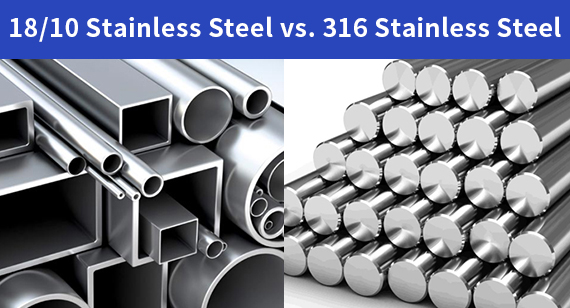
When comparing 18-10 stainless steel and 316 stainless steel, it’s important to focus on performance under real-world conditions. The answer to “which is better” comes down to the application environment, required corrosion resistance, and cost-efficiency.
316 stainless steel is generally considered the superior material in harsh or corrosive environments. This is because of its 2–3% molybdenum content, which provides exceptional resistance to chloride-induced corrosion, such as in saltwater or industrial chemical exposure. This makes 316 ideal for marine applications, chemical processing equipment, and medical devices where hygiene and durability are crucial.
On the other hand, 18-10 stainless steel — also known as a type of 304 stainless steel — offers excellent resistance to general corrosion and oxidation. It’s widely used in cookware, kitchen equipment, food processing machinery, and decorative applications. While not as resistant to chlorides as 316, 18-10 provides a good balance of performance, aesthetics, and affordability, making it a popular choice in CNC machining factories producing consumer-grade stainless steel CNC machined parts.
In summary, choose 316 stainless steel when corrosion resistance is the top priority and the operating environment is challenging. Opt for 18-10 stainless steel when cost is a concern and the component will operate in a more controlled or indoor environment. Both steels can be precisely crafted using CNC machining services, ensuring high-quality parts tailored to your industry’s needs.
Here’s a clear comparison table to help readers quickly understand the key differences between 18-10 stainless steel and 316 stainless steel:
| Comparison Aspect |
18-10 Stainless Steel |
316 Stainless Steel |
| Common Classification |
Type of 304 stainless steel | Marine-grade stainless steel (contains molybdenum) |
| Main Alloy Elements |
~18% Chromium, ~10% Nickel | ~16–18% Chromium, ~10–14% Nickel, ~2–3% Molybdenum |
| Corrosion Resistance |
Excellent general corrosion resistance | Superior corrosion resistance, especially to chlorides and salt |
| Applications |
Cookware, kitchen equipment, decorative parts | Marine, medical, chemical processing, food-grade piping |
| Cost |
More affordable | Higher cost due to added alloy elements |
| Machinability |
Good machinability | Slightly more difficult to machine due to added molybdenum |
| CNC Machined Parts Suitability |
Ideal for decorative and food-grade parts | Best for critical and high-corrosion environments |
| CNC Machining Services |
Used for consumer and light industrial components | Preferred for high-performance, durable components |
| Weldability |
Excellent | Excellent |
| Rust Resistance |
Good in indoor/low-salt settings | Excellent even in harsh, salty environments |
This table helps customers and engineers decide which material to choose when ordering CNC machined stainless steel parts from professional CNC machining factories. Let me know if you'd like this version in image format or embedded in a webpage layout.
18/10 stainless steel is a high-quality austenitic stainless steel that belongs to the 300 series—specifically a subtype of 304 stainless steel. The numbers “18/10” refer to its chemical composition: it contains 18% chromium and 10% nickel, which are key alloying elements that significantly enhance its corrosion resistance, shine, and durability.
Chromium and Nickel: The Foundation of Its Performance
Properties and Applications
Thanks to this composition, 18/10 stainless steel is:
Common applications include:
For CNC machining, 18-10 stainless steel CNC machined parts are often chosen for consumer goods, food-grade components, and ornamental finishes due to their superior polishability and corrosion resistance. CNC machining factories prefer this alloy when clients require both aesthetic and functional performance in moderately corrosive environments.
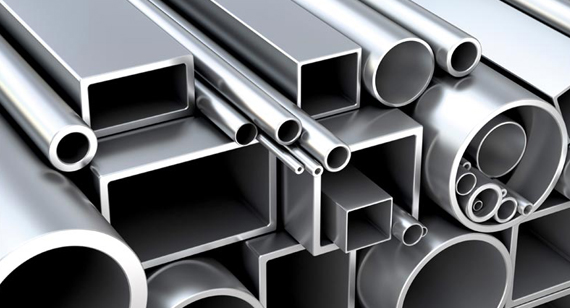
316 stainless steel is a premium-grade austenitic stainless steel, widely regarded for its exceptional corrosion resistance, especially in harsh or chloride-rich environments. It is an upgrade over 304 stainless steel, primarily due to the addition of molybdenum (Mo)—typically around 2% to 3%—which significantly enhances its resistance to pitting, crevice corrosion, and chemical attack.
Key Alloying Elements and Their Impact
Characteristics of 316 Stainless Steel
Typical Applications
Thanks to these properties, 316 stainless steel is often found in:
In the machining industry, 316 stainless steel CNC machined parts are ideal for customers who need high corrosion resistance, strength, and biocompatibility. Many CNC machining factories recommend 316 for parts that are exposed to salt spray, acids, or require hygienic finishes, especially in the marine, medical, and food-grade sectors.
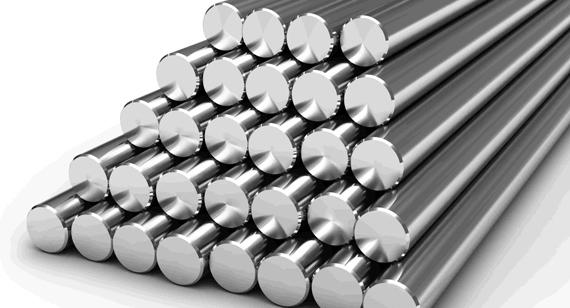
No, 18/10 stainless steel and 316 stainless steel are not exactly the same—though they share similarities, they belong to different classifications and are used for different purposes. The confusion arises because both contain 18% chromium and 10% nickel, but their alloy composition, performance characteristics, and applications can differ significantly.
Key Similarities:
Main Difference: Molybdenum Content
The defining difference is that 316 stainless steel includes 2–3% molybdenum (Mo), which dramatically improves resistance to chloride corrosion, saltwater exposure, and harsh chemicals. In contrast, 18/10 stainless steel usually does not contain molybdenum, or if it does, it's in trace amounts. This makes 316 the superior choice for more demanding environments.
Practical Implications:
| Aspect |
18/10 Stainless Steel |
316 Stainless Steel |
| Chromium/Nickel Content | 18% Cr / 10% Ni | 16–18% Cr / 10–14% Ni |
| Molybdenum | None or trace | 2–3% |
| Corrosion Resistance | High | Superior (especially in salty or acidic settings) |
| Applications | Cookware, cutlery, consumer goods | Marine, medical, food processing, chemical |
| Cost | Moderate | Higher due to molybdenum content |
In summary, 18/10 is a subset or simplified label for stainless steel grades, often equated with 304 stainless steel, while 316 is a more robust, corrosion-resistant grade designed for industrial and specialized applications. For CNC machining factories producing parts for marine or chemical industries, 316 stainless steel CNC machined parts are generally the preferred choice over 18/10.
When selecting stainless steel for precision-engineered components or consumer-grade products, understanding the subtle yet impactful differences between 18-10 stainless steel and 316 stainless steel is essential. While both are part of the austenitic stainless steel family, they are not interchangeable, especially when performance, environmental exposure, and cost-efficiency are taken into account. This section outlines their key distinctions, helping buyers, engineers, and procurement specialists determine the best fit for their CNC machined stainless steel parts needs—whether for cookware or for marine-grade assemblies.
Composition
18-10 stainless steel typically refers to a formulation with 18% chromium and 10% nickel, usually corresponding to grade 304. It lacks molybdenum, which limits its resistance to chlorides.
On the other hand, 316 stainless steel contains 16–18% chromium, 10–14% nickel, and 2–3% molybdenum. The addition of molybdenum gives it a notable advantage in harsh environments, such as marine or chemical exposure.
| Element |
18-10 Stainless Steel |
316 Stainless Steel |
| Chromium (Cr) |
~18% | 16–18% |
| Nickel (Ni) |
~10% | 10–14% |
| Molybdenum (Mo) |
0% | 2–3% |
Corrosion Resistance
While both grades offer strong corrosion resistance, 316 stainless steel outperforms 18-10 in highly corrosive environments due to its molybdenum content. This makes 316 ideal for marine applications, food processing equipment, and medical instruments. In contrast, 18-10 steel is better suited for general household or indoor applications, such as cookware or cutlery.
Wear Resistance
Both stainless steels exhibit moderate wear resistance, but 316 stainless steel performs better in long-term abrasive or high-friction environments. For components requiring frequent contact or mechanical motion—such as precision CNC machined shafts or valves—316 offers greater durability. However, for light to moderate wear scenarios, 18-10 is sufficient and cost-effective.
Oxidation Resistance
In terms of oxidation resistance at high temperatures, both 18-10 and 316 are reliable. However, 316 stainless steel can sustain slightly higher temperatures before surface scaling begins, thanks to its enhanced chemical structure. This makes 316 better suited for parts exposed to intermittent heating in industrial ovens, exhaust components, or processing equipment.
Welding
Both materials offer excellent weldability, making them suitable for precision fabrication and assembly. However, 18-10 stainless steel (304) is easier to weld and less prone to hot cracking. 316 stainless steel, while weldable, may require post-weld cleaning or heat treatment in certain critical applications to maintain corrosion resistance.
Machinability
From a CNC machining perspective, both grades present similar challenges. Austenitic stainless steels tend to be gummy and work-harden easily, requiring sharp tooling, proper coolant flow, and optimized speeds/feeds. However, 18-10 is slightly easier to machine than 316, making it a better choice for high-volume production of consumer-grade parts in CNC machining factories.
Cost
316 stainless steel is more expensive due to its molybdenum content and enhanced properties. If your application does not require high chloride resistance, 18-10 stainless steel offers better cost-efficiency, especially for decorative or indoor-use CNC machined parts.
Applications
| Feature |
18-10 Stainless Steel |
316 Stainless Steel |
| Common Uses |
Cookware, cutlery, kitchen equipment | Marine parts, valves, pumps, surgical tools |
| CNC Machined Part Examples |
Brackets, plates, handles | Shafts, flanges, impellers |
| Ideal Environments |
Indoor, mild moisture, food-safe | Saltwater, chemicals, high-corrosion environments |
By comparing the key performance traits, it's clear that the choice between 18-10 and 316 stainless steel should depend on the specific operational environment, required longevity, and budget. For CNC machining services producing stainless steel parts, VMT recommends 316 stainless steel for high-performance durability, and 18-10 stainless steel for economical, corrosion-resistant everyday use.
Choosing between 18-10 stainless steel and 316 stainless steel goes beyond just cost and corrosion resistance—it also involves evaluating each alloy's strengths and limitations in real-world applications. Whether you are sourcing materials for CNC machined stainless steel parts, cookware, industrial components, or medical tools, understanding the trade-offs will help you make an informed, long-term decision. This section dives into the unique advantages and drawbacks of each material, offering manufacturers, product designers, and procurement professionals a comprehensive performance analysis.
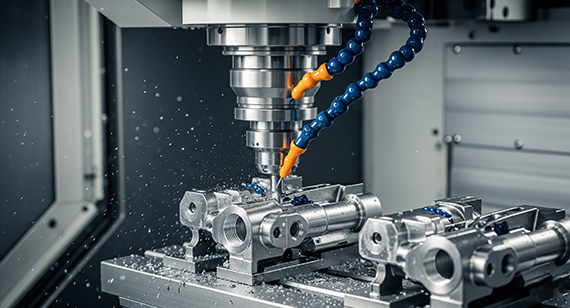
18/10 Stainless Steel: Advantages and Disadvantages
Often categorized as grade 304 stainless steel, 18/10 stainless steel is one of the most commonly used alloys worldwide. Known for its attractive finish, food-grade safety, and excellent machinability, it is widely used in both consumer products and CNC machining factories for standard structural parts. However, like all materials, it has both strengths and limitations.
Advantages of 18/10 Stainless Steel
Disadvantages of 18/10 Stainless Steel
316 Stainless Steel: Advantages and Disadvantages
Designed for harsh and corrosive conditions, 316 stainless steel is engineered with 2–3% molybdenum, elevating its resistance to extreme environments, including marine, medical, and chemical processing industries. Though more expensive, its performance advantages make it a smart long-term investment for high-precision CNC machined stainless steel components that demand reliability and longevity.
Advantages of 316 Stainless Steel
Disadvantages of 316 Stainless Steel
By comparing these performance factors, it's clear that 18/10 stainless steel is an excellent choice for cost-effective, general-purpose CNC machined parts, especially in low-corrosion settings. In contrast, 316 stainless steel delivers exceptional performance under harsh conditions, making it ideal for industries where failure is not an option.
Here is a detailed comparison table outlining the advantages and disadvantages of 18/10 stainless steel vs. 316 stainless steel, structured for clarity and usefulness to readers researching materials for CNC machining services:
18-10 Stainless Steel vs. 316 Stainless Steel: Advantages & Disadvantages Table
| Criteria |
18/10 Stainless Steel (Type 304) |
316 Stainless Steel |
| Corrosion Resistance |
Good in mild, indoor, or food-related environments | Excellent in marine, saltwater, and chemical environments |
| Composition Advantage |
High chromium and nickel for general durability | Contains 2–3% molybdenum for superior pitting and crevice corrosion resistance |
| Machinability |
Easier to machine and weld in high-speed CNC applications | Harder to machine due to work-hardening; requires advanced CNC techniques |
| Weldability |
Very good | Very good |
| Cost |
More affordable, cost-effective for general CNC parts | Higher raw material cost; long-term durability offsets expense |
| Wear Resistance |
Good | Better resistance to aggressive wear and abrasion |
| Oxidation Resistance |
Moderate | Excellent, especially at high temperatures |
| Temperature Resistance |
Up to ~870°C | Up to ~925°C; higher structural integrity at elevated temperatures |
| Applications |
Kitchenware, appliances, general CNC parts, architectural fixtures | Medical tools, marine hardware, chemical processing, outdoor CNC components |
| Aesthetic Finish |
Bright, polished surface; often used for decorative or food-contact parts | Similar polish possible; usually chosen for function over form |
| Food-Grade Compliance |
FDA-compliant; commonly used in cookware and cutlery | Also food-safe; preferred in pharmaceutical and food-processing environments |
| Durability in Harsh Envs. |
Limited; not ideal in chlorides, acids, or salt-rich air | Excellent; withstanding seawater, acids, and industrial exposure |
| Use Case Suitability |
Best for low-corrosion, indoor, or aesthetic CNC machining parts | Ideal for high-performance, long-lifespan components in demanding conditions |
This table helps customers and procurement engineers quickly assess which stainless steel fits their needs for CNC machined stainless steel parts. If the project involves exposure to aggressive environments or requires long-term strength, 316 stainless steel is the better investment. For general-purpose, cost-effective machining, 18/10 stainless steel remains a strong choice.
When choosing between 18-10 stainless steel and 316 stainless steel for CNC machining services, understanding their chemical compositions is critical. These compositions directly affect corrosion resistance, mechanical strength, weldability, and suitability for different environments. While both alloys are part of the austenitic stainless steel family and offer excellent formability and durability, their varying alloying elements—especially molybdenum in 316—create meaningful differences in performance. In CNC machining factories where precision and material behavior matter, selecting the right grade can significantly impact product quality and cost.
18/10 and 316 Stainless Steel: Chemical Composition
Although 18/10 stainless steel (commonly equivalent to AISI 304) and 316 stainless steel belong to the same category of austenitic stainless steels, the key difference lies in the presence of molybdenum in 316 and its impact on corrosion resistance and strength in harsh environments. Below is a detailed breakdown of their typical chemical compositions:
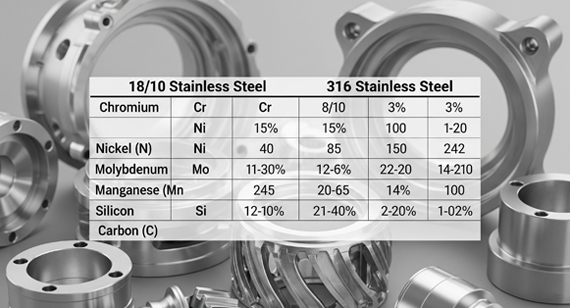
Chemical Composition Comparison Table
| Element |
18-10 Stainless Steel (AISI 304) |
316 Stainless Steel |
| Iron (Fe) |
Balance (~66–71%) | Balance (~62–68%) |
| Chromium (Cr) |
18.0–20.0% | 16.0–18.0% |
| Nickel (Ni) |
8.0–10.5% | 10.0–14.0% |
| Manganese (Mn) |
≤2.0% | ≤2.0% |
| Silicon (Si) |
≤1.0% | ≤1.0% |
| Carbon (C) |
≤0.08% | ≤0.08% |
| Nitrogen (N) |
≤0.10% | ≤0.10% |
| Phosphorus (P) |
≤0.045% | ≤0.045% |
| Sulfur (S) |
≤0.030% | ≤0.030% |
| Molybdenum (Mo) |
Not Present | 2.0–3.0% |
Key Takeaways:
This comparative breakdown offers engineers, purchasing managers, and CNC machining clients a clear understanding of how alloying elements affect performance, guiding informed material selection for their stainless steel CNC machined parts.
18/10 and 316 Stainless Steel: Physical Properties
When selecting materials for stainless steel CNC machined parts, understanding the physical properties of 18/10 stainless steel and 316 stainless steel is essential. These properties influence everything from thermal performance and machinability to dimensional stability, making them critical for CNC machining factories delivering high-precision components. While both are austenitic stainless steels with excellent non-magnetic behavior and corrosion resistance, their subtle differences in physical behavior can guide the best material choice depending on the end-use environment.
Physical Property Comparison Table
| Property |
18/10 Stainless Steel (AISI 304) |
316 Stainless Steel |
| Density (g/cm³) |
7.93 | 7.98 |
| Melting Point (°C) |
1400–1450 | 1370–1400 |
| Thermal Conductivity (W/m·K @ 100°C) |
16.2 | 16.3 |
| Electrical Resistivity (μΩ·cm) |
72 | 74 |
| Thermal Expansion (10⁻⁶/K @ 20–100°C) |
16.5 | 15.9 |
| Corrosion Resistance |
Good | Excellent (especially to chlorides) |
| Magnetic Properties |
Non-magnetic (annealed) | Non-magnetic (annealed) |
| Formability |
Excellent | Excellent |
| Machinability (Annealed) |
Fair | Fair to Good |
Analysis of Physical Properties
By understanding these distinctions, buyers and engineers can make data-backed decisions when choosing between 18-10 and 316 stainless steel for CNC machining services. The right selection boosts performance, longevity, and cost-efficiency in industries ranging from food processing to marine engineering.
18/10 and 316 Stainless Steel: Mechanical Properties
Mechanical properties determine how stainless steel materials behave under forces such as tension, compression, and shear. For CNC machining factories and engineers, these properties are crucial when designing parts that must withstand specific stresses, impacts, or fatigue during operation. Both 18/10 stainless steel (commonly AISI 304) and 316 stainless steel are austenitic grades with excellent toughness and strength, but variations in their alloy content influence key mechanical metrics such as hardness, tensile strength, and elasticity. Understanding these differences guides optimal material selection for precision stainless steel CNC machined parts.
Mechanical Property Comparison Table
| Property | 18/10 Stainless Steel (AISI 304) | 316 Stainless Steel |
|
Hardness (HRC) |
70–90 HB (~75–95 HRB) (approx. 150–200 HV) | 80–95 HRB (~160–200 HV) |
| Hardness: HV (Vickers) | 150–200 | 160–200 |
| Tensile Strength (MPa) | 505–750 | 515–760 |
| Yield Strength Rp0.2 (MPa) | 215–310 | 290–310 |
| Elongation (%) | 40–50 | 40–50 |
| Ultimate Tensile Strength (MPa) | ~620 | ~620 |
| Reduction of Area (Z/%) | ~50% | ~50% |
| Heating Temperature (Annealing) | 870–925°C | 870–925°C |
| Elastic Modulus (Young’s Modulus, GPa) | 193–200 | 193–200 |
| Elongation at Break (%) | ~50% | ~50% |
| Fatigue Strength (MPa) | ~240 | ~250 |
|
Shear Strength (MPa) |
~350 | ~400 |
| Shear Modulus (GPa) | ~77 | ~77 |
| Poisson’s Ratio | 0.27 | 0.27 |
Analysis of Mechanical Properties
This detailed mechanical property profile helps CNC machining factories and engineers make precise decisions when fabricating components from 18-10 stainless steel CNC machined parts or 316 stainless steel CNC machined parts. The choice depends on the required strength, wear resistance, and service environment.
Heat treatment plays a vital role in tailoring the properties of stainless steels to meet specific performance requirements. Both 18/10 stainless steel (AISI 304) and 316 stainless steel are austenitic alloys, known for their excellent corrosion resistance and toughness. However, their response to heat treatment processes like annealing and stress relieving can differ slightly due to their chemical compositions. Understanding these differences helps CNC machining factories optimize part performance, improve machinability, and extend service life.
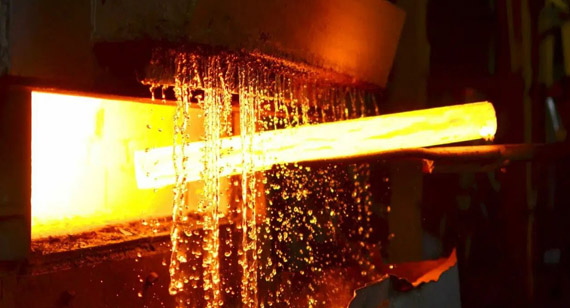
Heat Treatment Process for 18/10 Stainless Steel
Heat Treatment Process for 316 Stainless Steel
Key Differences and Considerations
Optimizing heat treatment according to these guidelines allows 18-10 stainless steel CNC machined parts and 316 stainless steel CNC machined parts to meet stringent performance standards demanded by modern industries.
Here's a clear and concise table comparing the heat treatment processes for 18/10 stainless steel and 316 stainless steel:
Heat Treatment Comparison Table: 18/10 Stainless Steel vs. 316 Stainless Steel
| Heat Treatment Aspect |
18/10 Stainless Steel (AISI 304) |
316 Stainless Steel |
| Primary Heat Treatment |
Annealing | Annealing |
| Annealing Temperature Range |
870°C – 925°C | 870°C – 925°C |
| Cooling Method After Annealing |
Rapid cooling (water or air quenching) | Rapid cooling (water or air quenching) |
| Purpose of Annealing |
Restore ductility, relieve stresses | Restore ductility, relieve stresses |
| Carbide Precipitation Risk |
Possible if cooling is slow; reduces corrosion resistance | Lower risk due to molybdenum content |
| Stress Relieving |
Optional, 450°C – 650°C for distortion control | Optional, 450°C – 650°C for dimensional stability |
| High-Temperature Stability |
Good | Excellent (due to molybdenum) |
| Effect on Corrosion Resistance |
Sensitive to improper heat treatment | More resilient to sensitization |
| Machinability Impact |
Annealing improves machinability | Annealing improves machinability |
| Recommended for |
General CNC machined parts with moderate corrosion exposure | CNC machined parts for harsh or corrosive environments |
This table helps engineers and procurement teams quickly grasp the differences and best practices in heat treatment for these two common stainless steel grades in CNC machining.
Choosing between 18/10 stainless steel and 316 stainless steel for CNC machined parts depends heavily on the intended application environment. Both materials boast excellent corrosion resistance and durability, but their specific properties make them suitable for distinct uses. Understanding where each grade excels helps manufacturers and clients in CNC machining factories select the right steel for their projects, ensuring performance, safety, and cost-efficiency.
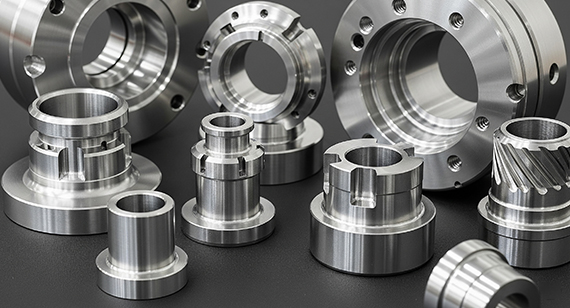
Applications of 18/10 Stainless Steel
18/10 stainless steel, commonly identified as AISI 304, is widely used for general-purpose applications due to its excellent balance of corrosion resistance, formability, and cost. Its main uses include:
Applications of 316 Stainless Steel
316 stainless steel is preferred in harsher environments due to its enhanced corrosion resistance, especially from its molybdenum content. Its typical applications include:
Summary
Selecting the right grade ensures your CNC machined parts meet specific operational demands, optimizing lifespan and maintenance costs.
Here is a clear comparison table summarizing the Applications and Uses of 18/10 stainless steel and 316 stainless steel:
Applications and Uses: 18/10 Stainless Steel vs. 316 Stainless Steel
| Application Area |
18/10 Stainless Steel (AISI 304) |
316 Stainless Steel |
| Kitchenware & Cookware |
Widely used for cutlery, pots, pans with polished finish | Used for high-end cookware needing enhanced corrosion resistance |
| Architectural Components |
Indoor railings, panels, decorative trims | Outdoor structures, coastal architecture, and harsh environments |
| Food Processing Equipment |
Suitable for machinery parts with moderate corrosion exposure | Ideal for highly corrosive or hygienic food processing machinery |
| Medical Instruments |
Commonly used for sterilizable tools and equipment | Preferred for critical medical devices requiring high corrosion resistance |
| Marine Hardware |
Not recommended for prolonged saltwater exposure | Excellent for boat fittings, propellers, and marine environments |
| Chemical Processing |
Limited use due to moderate chemical resistance | Widely used in chemical and petrochemical equipment |
| Oil & Gas Industry |
Less common | Frequently used for parts exposed to extreme conditions |
| Outdoor Use |
Suitable for mild outdoor exposure | Excellent durability in harsh weather and pollutant exposure |
| General CNC Machined Parts |
Suitable for indoor, non-aggressive applications | Best choice for CNC parts requiring high corrosion resistance and durability |
This table helps customers quickly understand the best-suited environments and industries for each stainless steel grade when considering CNC machining services.
Cost is a critical factor when selecting materials for CNC machining projects. Both 18/10 stainless steel and 316 stainless steel offer excellent corrosion resistance and mechanical properties, but they differ in initial purchase price and long-term value. Understanding these differences helps manufacturers, procurement specialists, and engineers optimize budgets without compromising quality and durability for stainless steel CNC machined parts.
Initial Cost Comparison
Long-Term Cost-Effectiveness
In summary, choosing between 18-10 stainless steel CNC machined parts and 316 stainless steel CNC machined parts requires balancing upfront costs with anticipated environmental demands and part longevity. Investing in 316 often results in better value over the component’s lifecycle, especially in challenging conditions.
Here is a clear and concise Cost and Price Comparison Table for 18/10 stainless steel vs. 316 stainless steel:
Cost and Price Comparison: 18/10 Stainless Steel vs. 316 Stainless Steel
| Cost Aspect |
18/10 Stainless Steel (AISI 304) |
316 Stainless Steel |
| Initial Raw Material Cost |
Lower, due to simpler alloy composition | Higher, due to molybdenum and higher nickel content |
| Availability |
Widely available and easier to source | Slightly less available, often specialty stock |
| Machining Cost |
Generally lower due to easier machinability | Slightly higher due to toughness and work-hardening |
| Maintenance Cost |
Higher in corrosive or harsh environments | Lower, due to superior corrosion resistance |
| Replacement Frequency |
More frequent replacements likely in aggressive conditions | Less frequent, extends component lifespan |
| Long-Term Cost-Effectiveness | Cost-effective for moderate environments, may increase with wear and corrosion | Better value in harsh environments with reduced downtime and maintenance |
This table enables CNC machining clients and engineers to weigh the upfront and lifecycle costs effectively when selecting between 18-10 stainless steel CNC machined parts and 316 stainless steel CNC machined parts.
For CNC machining factories and engineers, understanding the national standards and equivalent grades of stainless steel is critical. It ensures material consistency, quality control, and global compatibility for precision parts. Both 18/10 stainless steel and 316 stainless steel are internationally standardized, but they are often referred to by different codes depending on the country or industry. Clarifying these equivalences simplifies procurement and machining processes, improving efficiency in manufacturing stainless steel CNC machined parts.
National Standards and Equivalents for 18/10 Stainless Steel (AISI 304)
| Standard/Code |
Equivalent Grade |
Description |
| AISI/SAE |
304 | Austenitic stainless steel with 18% Cr, 8% Ni |
| ASTM |
A240, A276 | Common standards for stainless steel plates and bars |
| EN (European Norm) |
1.4301, X5CrNi18-10 | European equivalent grade to AISI 304 |
| JIS (Japanese Standard) |
SUS304 | Japanese Industrial Standard for 18/10 stainless steel |
| GB (China National Std.) |
0Cr18Ni9 | Chinese standard equivalent to AISI 304 |
National Standards and Equivalents for 316 Stainless Steel
| Standard/Code |
Equivalent Grade |
Description |
| AISI/SAE |
316 | Austenitic stainless steel with molybdenum addition for enhanced corrosion resistance |
| ASTM |
A240, A276 | Standards covering stainless steel for plates, bars, and piping |
| EN (European Norm) |
1.4401, X5CrNiMo17-12-2 | European equivalent for AISI 316 |
| JIS (Japanese Standard) |
SUS316 | Japanese Industrial Standard for 316 stainless steel |
| GB (China National Std.) |
0Cr17Ni12Mo2 | Chinese equivalent to AISI 316 |
Summary
Both 18/10 stainless steel and 316 stainless steel conform to widely recognized international standards, making them reliable choices for CNC machining parts with consistent quality and performance. Understanding these equivalences aids in global sourcing and ensures compliance with industry-specific regulations.
This knowledge empowers procurement teams and CNC machining factories to confidently specify materials for their stainless steel CNC machined parts, whether for domestic or international projects.
Selecting the right stainless steel grade for CNC machined parts is crucial for ensuring product durability, cost efficiency, and optimal performance in the intended environment. Both 18/10 stainless steel and 316 stainless steel are excellent materials with distinct advantages. The choice hinges on factors such as corrosion exposure, mechanical requirements, budget, and maintenance expectations. Understanding when to use each grade helps manufacturers and buyers make informed decisions aligned with their project needs.
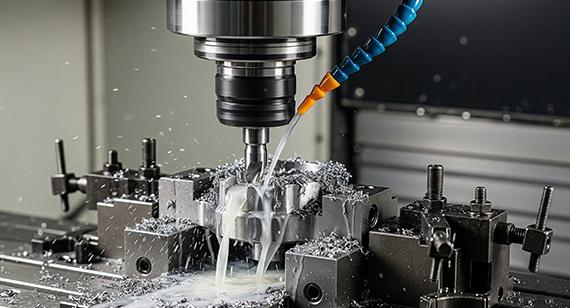
When Should I Use 18/10 Stainless Steel?
18/10 stainless steel, often known as AISI 304, is ideal for applications with moderate corrosion exposure and where cost-effectiveness is important. It excels in indoor environments or situations where parts are exposed to atmospheric moisture but not aggressive chemicals or saltwater. Typical scenarios include kitchenware, decorative architectural elements, food processing equipment with standard cleaning processes, and medical instruments that require good hygiene standards.
For CNC machining projects, 18/10 stainless steel is recommended when:
Using 18/10 stainless steel CNC machined parts ensures reliable performance in many commercial and consumer products without excessive maintenance costs.
When Should I Use 316 Stainless Steel?
316 stainless steel is preferred in highly corrosive or demanding environments where superior chemical resistance and durability are critical. Its molybdenum content enhances protection against chlorides, acids, and saltwater, making it ideal for marine applications, chemical processing, pharmaceuticals, and outdoor structures exposed to harsh weather conditions.
For CNC machining projects, 316 stainless steel is the best choice when:
In summary, choosing between 18-10 stainless steel CNC machined parts and 316 stainless steel CNC machined parts depends primarily on the environmental conditions and budget considerations. Proper material selection is key to optimizing product life, performance, and cost.
Here’s a clear and concise comparison table to help choose between 18/10 stainless steel and 316 stainless steel for CNC machining applications:
How to Choose Between 18/10 and 316 Stainless Steel
| Criteria | When to Use 18/10 Stainless Steel |
When to Use 316 Stainless Steel |
| Corrosion Exposure |
Moderate, indoor, or mild environments | High, marine, chemical, and harsh outdoor environments |
| Chemical Resistance |
Good for everyday use, food processing | Superior resistance to chlorides, acids, and saltwater |
| Mechanical Strength |
Suitable for general applications with moderate stress | Required for high-stress, wear-resistant, and industrial parts |
| Cost Consideration |
Cost-effective, budget-friendly | Higher initial cost justified by durability and longevity |
| Aesthetic Requirements |
High polish and decorative finishes | Functional durability prioritized over aesthetic |
| Maintenance Needs |
Lower maintenance in mild conditions | Low maintenance in corrosive or aggressive environments |
| Typical Applications |
Kitchenware, food equipment, medical tools, architectural trim | Marine hardware, chemical processing, pharmaceuticals, oil/gas |
This table provides CNC machining engineers and buyers with a quick reference for material selection based on application needs and environmental conditions.
When comparing 316 stainless steel and Grade 8 steel, it is important to understand that these two materials serve very different purposes and belong to different steel categories.
316 stainless steel is an austenitic stainless steel, prized primarily for its excellent corrosion resistance, toughness, and good mechanical strength. It contains chromium, nickel, and molybdenum, which contribute to its ability to withstand harsh environments, especially those involving chemicals and saltwater. Its typical tensile strength ranges around 515 to 760 MPa, with excellent ductility and toughness.
On the other hand, Grade 8 steel is a high-strength alloy steel commonly used in fasteners like bolts and studs. It is typically a quenched and tempered carbon steel, known for its superior mechanical strength rather than corrosion resistance. Grade 8 steel boasts a tensile strength around 1,100 MPa or more, which is significantly higher than 316 stainless steel. However, it lacks the corrosion resistance of stainless steels.
In summary:
Choosing the right stainless steel grade is essential to ensure that CNC machined parts meet performance, durability, and budget requirements. Both 18/10 stainless steel and 316 stainless steel are versatile materials, but their suitability depends on the specific demands of your project.
Suitability of 18/10 Stainless Steel
18/10 stainless steel (AISI 304) is highly suitable for projects where moderate corrosion resistance is sufficient. Its combination of chromium and nickel makes it ideal for applications like kitchenware, indoor architectural components, food processing equipment, and medical instruments. If your project involves environments with minimal exposure to harsh chemicals or saltwater and prioritizes aesthetic finish and cost-efficiency, 18/10 stainless steel CNC machined parts are a reliable choice.
Suitability of 316 Stainless Steel
316 stainless steel is better suited for challenging environments where superior corrosion resistance is critical. This includes marine applications, chemical processing, pharmaceutical manufacturing, and outdoor installations exposed to saltwater or acidic conditions. Its enhanced resistance to pitting and crevice corrosion ensures longevity and reduced maintenance. For projects demanding high durability and exposure to aggressive environments, 316 stainless steel CNC machined parts are the preferred option.
Final Considerations
By matching material properties to project needs, manufacturers and clients can ensure optimal performance and cost-efficiency from their stainless steel CNC machined parts.
At VMT, we specialize in delivering high-quality stainless steel CNC machined parts, including both 18/10 stainless steel CNC machined parts and 316 stainless steel CNC machined parts. Our advanced CNC machining services and experienced team ensure precision, reliability, and efficiency tailored to your project requirements.
Comprehensive CNC Machining Services
Why Choose VMT CNC Machining Factories?
Choosing VMT means partnering with a reliable, professional CNC machining factory capable of delivering superior stainless steel CNC machined parts tailored to your specific project needs. Contact us today to discuss your requirements and receive expert guidance on material selection, machining strategies, and cost optimization.
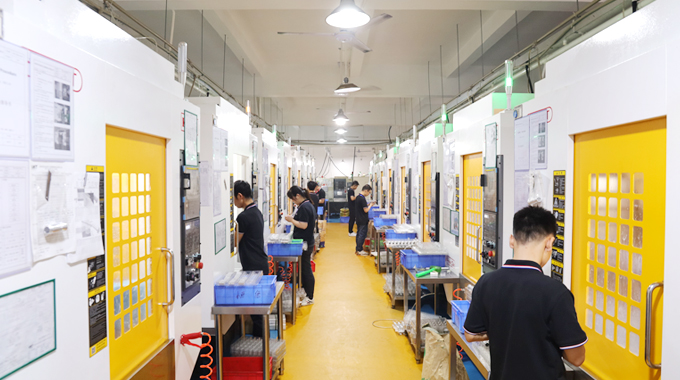
Choosing between 18/10 stainless steel and 316 stainless steel for CNC machined parts depends on a clear understanding of your project’s environmental conditions, mechanical requirements, and budget constraints. While 18/10 stainless steel offers excellent corrosion resistance, aesthetic appeal, and cost-effectiveness for moderate applications, 316 stainless steel stands out with superior durability and resistance in harsh, corrosive, and demanding environments.
For manufacturers and clients seeking reliable, high-quality stainless steel CNC machined parts, partnering with an experienced CNC machining factory like VMT ensures precision, consistency, and tailored solutions. VMT’s expertise in both stainless steel grades, combined with advanced machining technology and strict quality control, guarantees parts that meet or exceed your expectations.
Ultimately, selecting the right stainless steel grade and machining partner is crucial for maximizing performance, minimizing maintenance, and optimizing the total cost of ownership. With VMT’s comprehensive CNC machining services, your stainless steel components will achieve the perfect balance of strength, durability, and cost-efficiency tailored to your unique project needs.
Is 316 stainless steel the best?
316 stainless steel is considered one of the best grades for corrosion resistance, especially in harsh environments like marine or chemical applications. However, “best” depends on your specific needs—316 excels in durability and corrosion resistance but comes at a higher cost than some other stainless steels.
Is 18/8 stainless steel better than 316 stainless steel?
18/8 stainless steel (often AISI 304) has slightly lower corrosion resistance compared to 316 stainless steel due to the absence of molybdenum. For most everyday applications, 18/8 is sufficient, but 316 is better suited for corrosive environments.
Which is better, 18/8 or 304 stainless steel?
18/8 stainless steel and 304 stainless steel are essentially the same grade, both containing approximately 18% chromium and 8% nickel. They offer similar properties and performance.
Is 304 stainless steel better than 18-10?
304 stainless steel and 18-10 stainless steel generally refer to the same material, with 18-10 indicating 18% chromium and 10% nickel content. 18-10 may have slightly more nickel, providing better corrosion resistance and shine.
Does 316 stainless steel rust?
316 stainless steel is highly resistant to rust and corrosion but not completely impervious. Under extreme conditions or poor maintenance, surface rust can develop, though it is much less likely than with other steels.
Is 18-10 a high-quality stainless steel?
Yes, 18-10 stainless steel is considered a high-quality, durable stainless steel commonly used in cookware, kitchenware, and CNC machined parts due to its excellent corrosion resistance and aesthetic appeal.
Does 18-10 stainless steel rust?
While 18-10 stainless steel is corrosion-resistant, it can rust under prolonged exposure to harsh environments or if protective finishes are damaged. Regular cleaning and maintenance minimize rust risk.
Should I choose 18/10 or 316 stainless steel for my stainless steel cookware?
For most cookware, 18/10 stainless steel is sufficient, offering excellent corrosion resistance and affordability. 316 stainless steel is generally reserved for specialized cookware needing higher corrosion resistance.
Which stainless steel is better, 304 or 316?
316 stainless steel is better for corrosion resistance, especially in saltwater or chemical environments, while 304 stainless steel (18/8 or 18/10) is suitable for most general applications with less aggressive exposure.
Which is better, 316 or 316L?
316L is a low-carbon version of 316 stainless steel, providing better weldability and reduced risk of carbide precipitation. 316L is often preferred for welded parts in CNC machining.
Which is better, 316 or 420 stainless steel?
316 stainless steel offers superior corrosion resistance, while 420 stainless steel, a martensitic grade, has higher hardness and is often used for knives and cutting tools.
Which is better, 2205 or 316 stainless steel?
2205 is a duplex stainless steel with higher strength and better resistance to stress corrosion cracking than 316. It’s suitable for more demanding industrial applications.
Which is better, 18/8 or 18-10 stainless steel?
Both are very similar; 18-10 has slightly higher nickel content, providing marginally better corrosion resistance and shine.
What is the difference between 304 stainless steel and 18-10 stainless steel?
304 stainless steel is the technical grade designation, while 18-10 refers to its composition with 18% chromium and 10% nickel, often used interchangeably.
Is 18-10 pure stainless steel?
No stainless steel is “pure” iron; 18-10 is an alloy with 18% chromium and 10% nickel added to enhance corrosion resistance and mechanical properties.
If you need detailed advice on stainless steel CNC machining parts like 18-10 stainless steel CNC machined parts or 316 stainless steel CNC machined parts, VMT is here to help with expert guidance and precision machining services.
